Essential Vitamins for good health – A to Z. This article covers almost all aspects of essential vitamins required for a good health, their sources, daily requirements and toxicities.
Essential vitamins for good health – a brief intro …

Vitamins are essential components of the human body. These organic substances are not synthesized by the human body and must be present in the diet or taken as supplements.
Most of the metabolic pathways require vitamins for proper functioning. Vitamins may be associated with diseases ranging from mild skin changes to serious diseases involving the brain and the heart.
The ancient Egyptians recognized that night blindness can be treated by ingesting liver. Many diseases due to vitamins deficiency have been almost eradicated from the world. These include rickets, scurvy, beriberi, and pellagra.
Classification of Vitamins:
Vitamins are broadly classified into water-soluble vitamins and fat-soluble vitamins.
- Water-soluble vitamins include B complex vitamins
- Fat-soluble vitamins include Vitamin A, D, E and K
Who can develop vitamins deficiency?
People with inadequate diet:
Vitamin deficiency and toxicity is rare if individuals take a healthy balanced diet. People who have an imbalanced diet like vegetarians and children on formula milk may become deficient in certain vitamins. Similarly, deficiency of vitamins is also seen in those patients who are malnourished, lactating and pregnant females and the elderly patients.

Patients who are being fed through a nasogastric tube or a PEG tube may also become deficient in vitamins. Patients who are hospitalized and on parenteral nutrition therapy may become deficient in certain vitamins.
Patients with the following diseases can develop a deficiency of vitamins too:

Patients who have a chronic diarrheal state due to chronic gastrointestinal infections like tuberculosis, giardiasis or HIV (human immune-deficiency syndrome), celiac disease or tropical sprue, chronic pancreatitis and cystic fibrosis, post-cholecystectomy and postgastrectomy, inflammatory bowel diseases like Crohn’s disease may be associated with deficiency of vitamins.
Who can develop vitamins toxicity:
Toxicity occurs in patients who are using excess vitamin supplements.
Essential vitamins for good health – Vitamin A – The vitamin for your eyes!

Which Class of Vitamin is Vitamin A?
This is a lipid soluble vitamin called as retinoic acid. The provitamin A, present in plants is called as the carotenoids.
What are the sources Of Vitamin A:

The common food sources of vitamin A include liver, kidney, egg yolk and butter. The provitamin A is found in green leafy vegetables, carrots, and sweet potatoes. About 50 to 80% of the total body retinol or vitamin A is stored in the liver.
Diseases associated with Vitamin A deficiency:
Vitamin A deficiency is the third most common nutritional deficiency in the world. Vitamin A deficiency can cause blindness, especially in the developing countries. Approximately 50000 children become blind each year.

Vitamin A deficiency causes dryness of the eyes because of defective tear secretion. This is called as xerophthalmia and is manifested by the presence of Bitot’s spots. Vitamin A deficiency also causes night blindness (nyctalopia) and retinopathy.
Dermatologic problems:
Deficiency of vitamin A causes nonspecific skin changes. These may include skin thickening and the destruction of hair follicles.
Other effects:
Vitamin A deficiency is known to affect immunity and its deficiency results in poor wound healing as well as poor bone growth.
Diseases causing vitamin A deficiency:
Apart from inadequate intake, vitamin A deficiency can be seen in disorders associated with fat malabsorption such as cystic fibrosis, celiac disease, liver diseases, inflammatory bowel diseases like Crohn’s colitis, and pancreatic insufficiency.
How to replace Vitamin A:
The WHO recommends replacement of Vitamin A in countries where it is endemic.
Periodic distribution:
Vitamin supplement should be given to the population residing in endemic areas at four to six months intervals in a dose of 1 mcg or 3.3 IU.
Replacement of vitamin A in infants:
Infants less than 6 months of age who are not breastfed should be given 50000 IU orally. Breastfed infants may be given oral vitamin an only if the mother is deficient or has not received any supplements. Infants 6 -12 months of age be given 100000 IU orally Children 12 months of age or more should receive 200000 IU orally.
Replacement of Vitamin A in mothers.
Mothers may be given 200000 IU orally within 8 weeks of delivery. Pregnant women should not be given high doses of vitamin A because of the teratogenic effects of vitamin A ‘but may receive frequent small doses of 10000 to 25000 IU weekly.
Children at high risk:
Children who are at high risk of vitamin A deficiency such as those with measles, diarrhea, respiratory diseases, and malnutrition may be given supplemental doses according to their age groups as mentioned above.

For patients who become symptomatic, the therapeutic dose of vitamin A is given in three doses as mentioned above. The first dose is given immediately on diagnosis, then the next day and the third dose after two weeks of the second dose.
Symptoms of vitamin A toxicity:
Most of the patients who develop vitamin A toxicity are those using high doses of vitamin A supplements. High doses of the provitamin A is less likely to cause toxicity. Patients may develop yellowish discoloration of skin due to carotenemia without evidence of vitamin A toxicity.
Acute vitamin A toxicity:
Vitamin A toxicity can be acute when very high doses of vitamin a is ingested ( >660000 IU). Symptoms of acute toxicity include nausea, vomiting, vertigo, a blurred vision which may progress to malaise and drowsiness.

Chronic Vitamin A toxicity:
Chronic vitamin A toxicity include skeletal pains and bone fractures, hair loss, liver toxicity even cirrhosis, headache due to raised intracranial pressure and abnormal lipid profile.

Other important adverse effects of vitamin a include teratogenic effects, especially when taken in the first trimester. This may lead to abortions and fetal malformations like microcephaly, and cardiac anomalies.
Therapeutic uses of Vitamin A in other conditions :
- Vitamin A reduces mortality and complications in patients with measles.
- Vitamin A is used in the treatment of a variety of skin disorders like acne, psoriasis and skin cancers.
- Vitamin A is also used in the treatment of acute promyelocytic leukemia with excellent results.
Blood test for Vitamin A levels may be misleading …
Serum vitamin A levels may be misleading since most of it is stored in the liver and kidneys.
Daily requirements:
RDA Recommended daily allowance of vitamin A for adult males is 3000 IU and 2300 IU for females
Essential vitamins for good health – Vitamin B1 or thiamine:
Vitamin B1 or thiamine was initially called as the anti-beriberi vitamin. Beriberi has been described in the ancient Chinese books as far back as 2697 BC.

Sources of vitamin B1 or thiamine:
Thiamine is found in large amounts in foods such as rice, legumes, and cereals. Milk products, fruits, and vegetables are poor sources of vitamin B1. Cooking can destroy thiamine.

The half-life of thiamine is about 20 days. It is mostly found in the skeletal muscles, brain, heart and the kidneys. Because of the limited storage, continuous supplementation is required.
Diseases associated with Vitamin B1 deficiency:
Thiamine deficiency has been associated with beriberi, Wernicke-korsakoff syndrome and Leigh’s syndrome.
Beriberi:
Beriberi is further classified as dry beriberi and wet beriberi. Dry beriberi is manifested by a symmetrical motor and sensory neuropathy while wet beriberi is manifested by cardiac failure in addition to neuropathy.

Wernicke-korsakoff syndrome:

The Wernicke-korsakoff syndrome is again divided on the basis of the clinical manifestations. Wernicke’s encephalopathy is an acute condition requiring emergency treatment to prevent death. It is a triad of nystagmus, ataxia, and ophthalmoplegia.
This triad is almost exclusively found in heavy alcoholics who become deficient in thiamine. Korsakoff syndrome is a chronic condition that occurs as a sequela of Wernicke’s encephalopathy. It is characterized by impaired memory and confabulation.
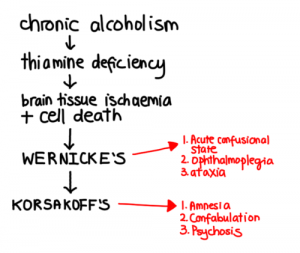
Wernicke’s encephalopathy is managed by giving high doses of thiamine. Patients should be given thiamine first and dextrose later as glucose may precipitate the disease.
Leigh syndrome or progressive subacute necrotizing encephalopathy:
Leigh syndrome or progressive subacute necrotizing encephalopathy: it presents in early childhood with ataxia, dysarthria, areflexia, muscle atrophy, and weakness.
Toxicity of vitamin B1 or thiamine:
Thiamine is rapidly removed from the body. Therefore, thiamine toxicity does not exist
Daily requirement:
RDA for men is 12 mg daily and 1.1 mg for women. And 1.4 mg during pregnancy and lactation. Thiamine can be administered in a dose of 50 to 100 mg for 7 to 14 days as an IM or IV injection.
Essential vitamins for good health – Vitamin B2 or riboflavin:
Another water-soluble vitamin which plays a critical role in numerous biochemical reactions.

Sources of vitamin B2:
It is present in many food items like meat, fish, eggs, milk, and green vegetables.

Symptoms when a person is deficient in Vitamin B2 (riboflavin):
Deficiency of Riboflavin is more common than generally appreciated. Mild deficiency states can go unnoticed. Clinical deficiency presents with a sore throat, cheilitis, glossitis, stomatitis, hyperemia of the mucous membranes, normocytic normochromic anemia, and dermatitis.
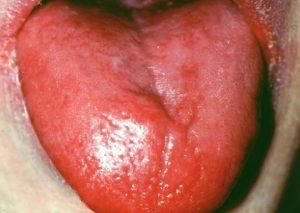

Since deficiency of riboflavin is also associated with deficiency of other vitamins, it is not clear whether these features are solely due to riboflavin or other vitamin deficiency.
Who can develop vitamin B2 (riboflavin deficiency):
Deficiency of riboflavin occurs in malnourished patients and third world countries where dietary habits are poor. Other individuals at risk of developing riboflavin deficiency are:
- Patients with anorexia nervosa
- Patients with lactose intolerance and those who avoid dairy products
- Patients with malabsorption syndromes such as celiac disease, gut malignancy, and short bowel syndrome.
- Patients using barbiturates on a long-term basis may also become deficient.
Vitamin B2 toxicity:
Vitamin B2 toxicity, like thiamine deficiency, is not known to exist because of the water-soluble nature of the vitamin. Toxic doses are not usually absorbed by the GI tract.
Daily requirement:
RDA for adult men is 1.3 mg and 1.1 for adult women. RDA for a pregnant patient is 1.4 and 1.6 mg for lactating women.
Use of vitamin B2 in other diseases:
Lactic acidosis due to the use of antiretroviral therapy (zidovudine and stavudine) usually respond to riboflavin.
Essential vitamins for good health – Vitamin B3 or Niacin:
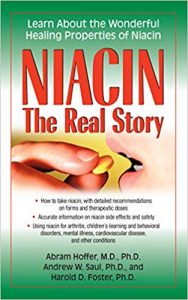
Pellagra (meaning raw skin) was first described in the 18th century in Spain and Italy. Pellagra is characterized by the famous mnemonic “the four Ds”. Dermatitis, usually in sun-exposed areas i.e. photosensitive dermatitis, diarrhea, dementia, and death.

In developed countries, pellagra is extremely uncommon but can still be seen in parts of Africa, South Asia, and war-struck areas. In developed countries, it is usually seen in alcoholics, anorexia nervosa and patients with malabsorptive states.
In 1937, Niacin was isolated and was labeled as “anti-pellagra factor”. Sources of Vitamin B3: Vitamin B3 or niacin is present in a variety of food items. Meat, cereals, legumes, and seeds are specifically rich in Niacin.

Corn is deficient in niacin and its precursor, tryptophan. Hence pellagra may be seen in areas where corn is the primary source of nutrients.
Symptoms when a person is deficient in Vitamin B3:
The characteristic rash in pellagra is a symmetric hyperpigmented rash, similar to a sunburn.
Other than the rash on sun-exposed areas, patients may develop a red sore tongue, diarrhea, vomiting, lack of sleep, disorientation, delusions, dementia, and encephalopathy.
Three conditions which may specifically be associated with vitamin B3 or Niacin deficiency:
- Carcinoid syndrome: tryptophan is metabolized to other metabolites like serotonin rather than niacin. This leads to a deficiency of the active form of niacin.
- Isoniazid use: Isoniazid is a major component of anti-tuberculous therapy. Isoniazid intake depletes pyridoxine.
Pyridoxine is responsible to enhance the production of tryptophan which is a precursor of Niacin. Other drugs may similarly be responsible for niacin deficiency in a similar manner. These include azathioprine, pyrazinamide, ethionamide, phenobarbital, and chloramphenicol.
- Hartnup disease is an autosomal recessive congenital disease associated with a defect in a transport membrane, responsible for the absorption of tryptophan.
 The disease manifests itself as pellagra.
The disease manifests itself as pellagra.
Symptoms of vitamin B3 toxicity:
Flushing reaction is associated with the intake of excessive amounts of niacin. At higher doses, nausea, vomiting, pruritis, hives or urticaria and deranged liver enzymes may be noticed. Niacin may also be responsible for elevating uric acid and may cause myopathy in toxic doses.
Therapeutics of Niacin:
Niacin is used to treat dyslipidemia. It causes a reduction in LDL and has a modest effect on improving HDL.
Recommended Daily Allowance: 16 Niacin Equivalents (NE) for males, 14 NE for females, 18 NE during pregnancy and 17 NE during lactation are recommended RDA in adult individuals.
One NE is equal to 1 mg of Niacin, equivalent to 60 mg of tryptophan. Patients who have undergone bariatric surgery and those on hemodialysis may require higher doses.
Essential vitamins for good health – Vitamin B5 or pantothenic acid:
The biological form is also called as Coenzyme A (CoA)

Sources of Vitamin B5:
Egg yolk, liver, kidney, broccoli, and milk. Other sources include chicken, beef, potatoes, and whole grain. Pantothenic acid is also produced by colonic bacteria.

Who can become deficient in Vitamin B5:
Pantothenic acid deficiency is rare in humans except in severely malnourished individuals like the war-struck areas. Patients may present with paraesthesias and burning feet syndrome.

Toxicity of Vitamin B5:
No known toxicity of pantothenic acid has been identified. Excess of it is excreted via the kidneys. Daily requirements of vitamin B5: No RDA has been defined.
Adequate intake for men and women is 5 mg daily. For pregnant women, 6 mg and 7 mg for lactating women are defined as adequate intake.
Essential vitamins for good health – Vitamin B6 or pyridoxine:

It was initially isolated from the anti-pellagra factor.
Sources of vitamin B6:
Meats, whole grain, nuts are the best sources of vitamin b6.

Cooking can reduce the bioavailability of b6 by 10 to 50 %.
Deficiency of vitamin B6:
Mild deficiency can manifest as nonspecific signs and symptoms like stomatitis, cheilosis, glossitis, irritability, confusion, and depression.
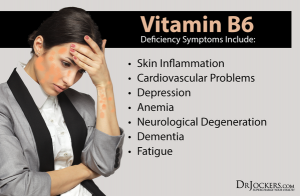
Vitamin b6 deficiency may result in an elevation in homocysteine levels, responsible for atherosclerosis.
Use of Pyridoxine in other conditions:
Pyridoxine in doses up to 10 to 25 mg is recommended with isoniazid therapy to prevent neuropathy. It has also been used in homocysteinemia, downs syndrome, autism, gestational diabetes, carpal tunnel syndrome, premenstrual syndrome, depression and diabetic neuropathy with variable results.
Toxicity of pyridoxine:
Excess of vitamin B6 can cause neuropathy, nausea, vertigo, photosensitivity, and dermatosis. Daily requirement: RDA for men and women is 1.3 mg to 1.7 mg.
Higher doses are required in elderly patients especially those above 50 years of age. During pregnancy, RDA is 1.9 mg and 2 mg during lactation.
Essential vitamins for good health – Folic acid (vitamin B9):

Folic acid or folate is another water-soluble vitamin responsible for cells synthesis. All rapidly proliferating cells like blood cells and intestinal villi cells require folic acid.
Who can develop Folic acid deficiency:
Deficiency of folic acid can result in children who take inadequate amounts of green leafy vegetables and fruits in their diet. Patients with malabsorption and those on certain chemotherapeutic antifolate drugs also may manifest with folate deficiency.
Symptoms of folic acid deficiency:
Patients may develop glossitis, cheilosis, and diarrhea. Megaloblastic anemia similar to deficiency of vitamin b12 deficiency anemia may present with fatigue, progressive pallor, and lethargy. Pregnant patients specifically require folic acid for fetal growth.
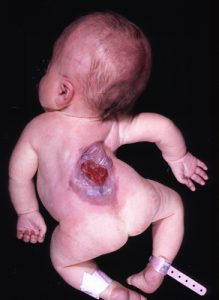
Neural tube defects manifested as spina bifida and neurological complications in the child are of special concern. Patients on certain antimalarials, chemotherapeutics, and non-biological DMARDs require extra doses of folic acid to avoid marrow suppression.
Who should not be given folic acid:
Folic acid should not be given prior to correcting vitamin b 12 deficiency as it may lead to neurological worsening i.e it may precipitate subacute combined degeneration of the cord.
Daily requirements of folic acid:
RDA for pregnant females is 600 ug per day, for lactating women RDA is 500 ug per day. RDA for adults men and women is 400 Ug per day. For children, it varies from 150 to 400 ug per day.
Essential vitamins for good health – Vitamin B12 or cobalamine:
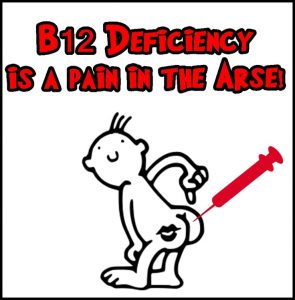 Vitamin B12 is a water-soluble vitamin. It is the only vitamin with no known plant sources. This makes vegetarians at risk of developing vitamin B12 deficiency.
Vitamin B12 is a water-soluble vitamin. It is the only vitamin with no known plant sources. This makes vegetarians at risk of developing vitamin B12 deficiency.
Who can develop vitamin B12 deficiency:
Vitamin b 12 deficiency can be found in a variety of diseases. An inadequate diet like vegetarians, malnourished and patients on protein restriction due to kidney or renal diseases leads to a deficiency of vitamin B12.

Patients with intrinsic factor deficiency also known as pernicious anemia, those who have had gastrectomy, an ileocecal disease like tuberculosis and Crohn’s disease are also at risk of developing vitamin B12 deficiency.
What are the features of vitamin B12 deficiency:
Major symptoms of vitamin B12 deficiency can be manifested because of its role in the synthesis of blood and myelin sheaths.
Thus neurological Symptoms of vitamin B12 deficiency range from mild numbness, lethargy, paraesthesias to subacute combined degeneration of the cord and dementia. Effects of blood results in anemia, macrocytosis, and pancytopenia.
Thus patients may present with progressive pallor, exertional dyspnea, palpitations, petechiae and gum bleed, and jaundice (due to early breakdown or hemolysis of deformed red cells also called as ineffective erythropoiesis).
Daily requirements:
RDA for men and women is 2.4 ug/day. RDA for pregnant females is 2.6 ug/day and for lactating women, it is 2.8 ug/day.
Sources of vitamin B12:

Milk, eggs, meat, and liver are good sources of vitamin b 12. Bacteria in the human gut can also synthesize vitamin b12 but since they reside in the colon where absorption does not take place, vitamin b12 produced by the bacteria can not be used by the human body.
Drugs like chronic use of antacids and proton pump inhibitors and antidiabetic medicines like metformin may reduce the absorption of dietary vitamin B12.
Toxicity of vitamin B12:
As other water-soluble vitamins, the toxicity of vitamin b12 is very rare.
Essential vitamins for good health – Vitamin C or ascorbic acid:
 Scurvy was described in the literature of ancient Egypt, Greek, and Rome. Scurvy was the major cause of morbidity and death in the European and British explorers. James cook first noticed that intake of vegetables and fruits can minimize the incidence of scurvy in the sailors.
Scurvy was described in the literature of ancient Egypt, Greek, and Rome. Scurvy was the major cause of morbidity and death in the European and British explorers. James cook first noticed that intake of vegetables and fruits can minimize the incidence of scurvy in the sailors.
Sources of Vitamin C:

Important food sources of vitamin C include citrus fruits, tomatoes, potatoes, cauliflower, strawberries, cabbage, spinach, and broccoli.
Deficiency of vitamin C:
Because of vitamin c or ascorbic acid is necessary for collagen synthesis, its deficiency may lead to defective collagen formation. Manifestations may include bleeding gums, petechiae, ecchymosis, coiled hair, hyperkeratosis, Sjogren’s syndrome, arthralgias, and impaired wound healing.

Other symptoms may include weakness, malaise, arthralgias, muscle weakness, joint swelling, edema, depression, neuropathy, and vasomotor disturbances. Scurvy can be treated by treating the underlying disease and supplementation with vitamin C. constitutional symptoms may improve within 24 hours but gingival bleeding requires weeks.
Toxicity of vitamin C:
Large doses of vitamin C can interfere with stool guiac results and may give false positive results. Patients on hemodialysis and those at risk of developing oxalate stones should avoid excess vitamin C.
Daily requirements:
RDA is 90 mg for men, 75 mg for women. Pregnant, lactating and the elderly require 120 mg//day. Smokers also require high doses as much as upto 40% above the usual requirements.
Essential vitamins for good health – Vitamin D or calciferol:
 Vitamin D is a fat-soluble vitamin. Vitamin D is the only vitamin which the body can synthesize by itself. Vitamin D deficiency is now rare and the incidence of rickets has declined dramatically. Subclinical deficiency may be seen in the elderly who are at risk of osteoporosis and fractures.
Vitamin D is a fat-soluble vitamin. Vitamin D is the only vitamin which the body can synthesize by itself. Vitamin D deficiency is now rare and the incidence of rickets has declined dramatically. Subclinical deficiency may be seen in the elderly who are at risk of osteoporosis and fractures.
Sources of Vitamin D:

Vitamin d can be synthesized by the skin after exposure to sunlight. It can also be ingested in food. Dairy products, fish, cod-liver oil, and eggs are good sources of vitamin D.
Who can develop Vitamin D deficiency:
Vitamin D deficiency can be present in patients with inadequate intake, malabsorption, kidney and liver diseases and patients with genetic defects where vitamin d may be present in adequate amounts but there is end organ insensitivity.
What are the clinical features of Vitamin D deficiency:

Vitamin d deficiency can cause non-specific skeletal pains, rickets in children and osteomalacia in adults and increase the risk of osteoporosis and fractures.
Who can develop Vitamin D toxicity:
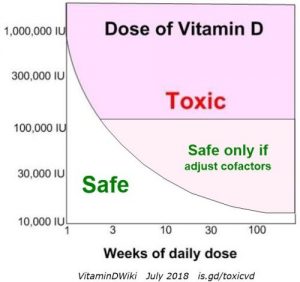
Toxicity is found mainly in those who take more than 60000 IU per day of vitamin d
What are the symptoms of Vitamin D Toxicity:
Vitamin d in excess can cause hypercalcemia leading to polyuria, confusion, anorexia, vomiting, and nephrolithiasis.
Daily Requirements of Vitamin D:
RDA for all individuals less than 71 years of age including pregnant females is 600 IU or 15 mg per day. Above 71 years of age, RDA is 800 IU or 20 mg per day.
For infants less than one years of age, the recommended dose is 400 IU per day. In most children, sun exposure provides adequate vitamin D to prevent rickets.
Seasonal variation and geographic variation exist but for Caucasian children exposed to the sun in diapers only for 30 minutes in a week provides sufficient vitamin D to meet the body’s requirements.

In clothed kids with no hat, 2 hours of sun exposure per week is recommended. Africans and those with pigmented skin require longer periods The tolerable upper limit of vitamin d has been defined as 100 mcg or 4000 IU daily for healthy adults.
Essential vitamins for good health – Vitamin E or tocopherol:

Vitamin E was initially labeled as the anti-sterility factor. In fact, the term “toc” means child and “phero” means to bring forth. Vitamin E is a lipid soluble vitamin with anti-oxidant properties and is essential for fetal and child development.
Sources of Vitamin E:

Vitamin E is found in a variety of food items including oils, meat, eggs, and leafy vegetables.
Daily Requirements of Vitamin E:
The daily requirement of vitamin E is 15 mg for adolescents, adult men, and women. For children, the daily requirement is 6 mg per day. Patients with a cholestatic liver disease may become deficient in fat-soluble vitamins and require high doses of vitamin E.
Who can develop Vitamin E deficiency:
Although vitamin E deficiency is very rare because it is present in abundance in different food items.
Symptoms of Vitamin E deficiency:
 Adults and children with vitamin E deficiency may develop neuromuscular weakness, spasticity and hemolysis.
Adults and children with vitamin E deficiency may develop neuromuscular weakness, spasticity and hemolysis.
Both neuropathic and myopathic symptoms may develop in patients with vitamin E deficiency. Myopathy and pigmentary retinopathy may develop. Other features include loss of sensations, hyporeflexia, and ataxia.
Excess and toxicity:
Vitamin E can be toxic if taken more than 1000 mg per day. The toxic effects are not very clear but patients taking high doses of vitamin E have increased all-cause mortality. It also increases the risk of hemorrhagic strokes.

In children, it has been associated with necrotizing enterocolitis. Lastly, vitamin E supplementation reduces the absorption of dietary vitamin A, K, and iron. It also increases the toxicity of warfarin.
Essential vitamins for good health –Vitamin K:
 Vitamin K was discovered about half a century ago. It acquired its name “vitamin K” from the German/ Danish word Koagulation when it was found to have anti-hemorrhagic properties.
Vitamin K was discovered about half a century ago. It acquired its name “vitamin K” from the German/ Danish word Koagulation when it was found to have anti-hemorrhagic properties.
Sources of Vitamin K:
Vitamin K is found in green vegetables like spinach and broccoli. Gut microflora also synthesize vitamin k

Deficiency of vitamin K:
Clinical symptoms of vitamin K include easy bruisability, mucosal bleeding, melena, hematuria, and deep bleeds. Deficiency of vitamin K is very rare except in areas of starvation, those on long-term antibiotics and total parenteral nutrition.

Since vitamin K is responsible for the synthesis of vitamin K dependent factors in the liver, its deficiency can be evaluated in the laboratory by measuring prothrombin time.
Vitamin k deficient bleeding or hemorrhagic disease of the newborn is a clinical entity where newborns deficient in vitamin k develop cutaneous, gastrointestinal and intracranial bleeding.
Vitamin k toxicity is very rare.
The daily requirement is 90 mcg for women and 120 mcg for women. Vitamin k is an antidote for warfarin. It may be used to reverse the toxic effects of warfarin especially when the patient is bleeding.


